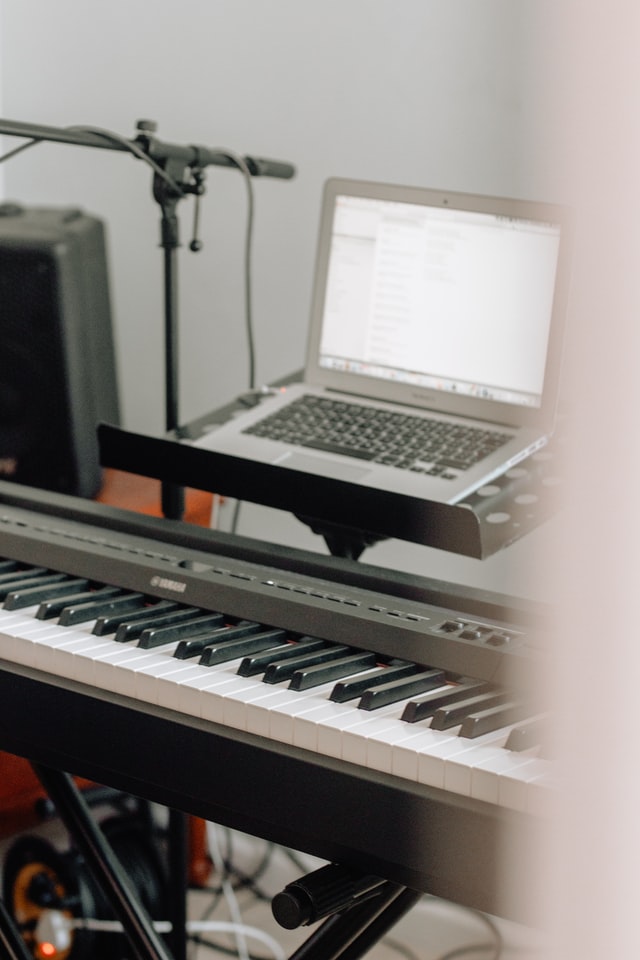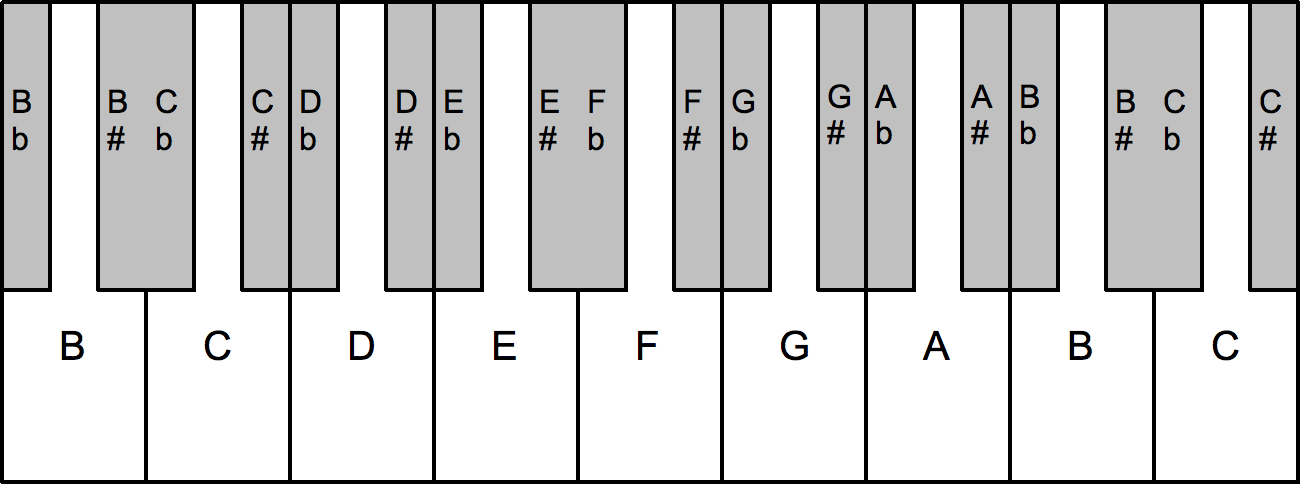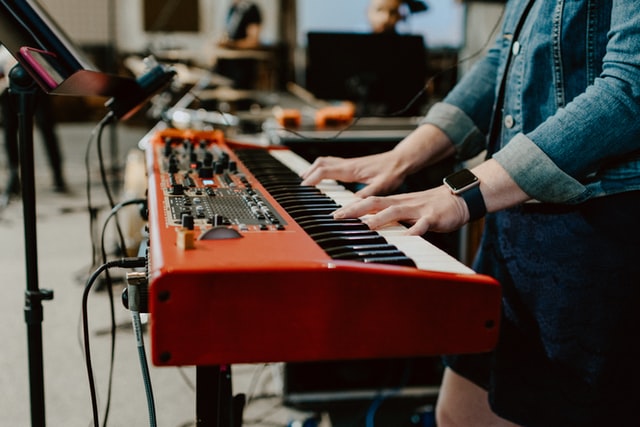What are the steps to learning piano?
When you set out to learn how to play the piano, you can find that there are a lot of difficulties, and one is simply not knowing what the process looks like. What are the steps to becoming an established piano player?
Before we start, it is definitely worth acknowledging that everybody has a different journey. Your steps to learning piano might vary somewhat, but our list is designed to help to give you a clearer idea of what lies ahead of you when you approach piano as a total beginner. This way, you can visualize what it is going to take to go from the sort of person who doesn’t know “A” from “B”, to the sort of person who can wow a room with piano playing.
Let’s take a look at some of the steps to learning piano. In fact, the steps might start way before you even place your hand on a piano or a keyboard.
Finding Your Equipment
This is a challenge in itself. Finding the right piano equipment for those who want to start to learn can be the first step, and it takes place before you read a piano book or watch a tutorial video, let alone take a lesson.
Getting the right equipment is so important. We’ve created some content right here on the Pianu blog to guide you through the process. Check out the posts below for an in-depth view, or keep reading for a few basics guides to getting the right equipment.
Can I learn Piano on a Keyboard? The Answer is Simple, and Brilliant for Your Bank Balance
Choosing a Keyboard to Learn Piano – Our Guide to the Top Keyboards
- If you go for an acoustic piano, keep in mind the fact that you need to get it tuned regularly.
- A keyboard is fine for learning how to play, but try to get weighted keys, and opt for an 88-key model if you can to enjoy the full range. A “digital piano” may be best.
- Consider portability. If you want something you can take to lessons or band practice then you should try not to get a big, bulky digital piano.
- Don’t spend a fortune if you are just starting out. You can always upgrade as time goes on.
There are more choices on the market for piano equipment than ever before. This can be confusing, but it is generally a good thing, meaning you can find the right piano option at the right budget for you.
Learning Materials or Lessons
Another of the most important steps to learning piano that takes place way before you actually get started.
It is important that you work out how you are going to approach learning. Luckily, in the 21st century, self-teaching piano is an option. You don’t ever have to leave the house to learn how to play the piano if you don’t want to, with courses like Pianu’s academy.
Other options for learning how to play the piano include the “old-fashioned” way! In-person lessons are still an effective method for a lot of people who want to learn how to play, especially if you find that you get a lot out of the social side of playing an instrument. However, it can quickly become expensive.
Apps, video courses, books, and even YouTube videos can all be a part of your learning materials. It is a good idea to work out your learning style and make an informed decision on how you will approach your piano lessons.
Get Familiar With The Notes
The first of the steps to learning piano that actually involves placing your fingers on the keys! This step will not surprise you. It is the fundamental basis of most piano knowledge, so it’s vital to get it right, and to tackle this step first before you go any further with your piano journey.
The notes of a piano can look confusing to start with. 88 keys certainly sounds like a lot!
Image source: Wikimedia.org
Luckily, the piano is not as hard to understand as it might first appear, as the notes of the piano are simply a repeating pattern, called an octave.
Learn the white notes first. A, B, C, D, E, F, and G, and then the notes simply repeat. This repetition is measured in “octaves” from C to C on a piano. These 7 notes make up the white notes of the piano. The black notes represent sharps and flats, and these relate to the white notes they are next to, so it is relatively easy to anchor yourself on the piano.
Some people start out by using stickers to mark which notes are which, but we advise against this, as it is a crux you might come to rely on, and eventually, you’re going to need to learn the notes yourself!
Those notes are the basis of the chords of the piano and the scales used to write songs. If you are going to learn to play beautiful melodies, knowing which note is which is a vital and basic skill. Get this nailed first. You can even test yourself.
The Musical Staff (Starting to Read Music)
The staff is the basis of being able to read music. It might help to think of it as its own language.
There are some simple tricks and tips to learn where a note sits on the staff. Our interactive treble clef is one of the best ways to teach yourself and to get a great feel for the notes of the staff. Head over to this section of our academy and press notes on the keyboard to see where they sit on the staff.
Reading music is a subject of some debate. This is one of the ways in which the steps to learning piano can vary. Some people choose to go the traditional route of learning how to read music. Undoubtedly, this opens up a world of possibilities and some people can read and play any piece of music in minutes. However, it takes time, and in the modern age of YouTube tutorials and interactive courses, it is not 100% necessary for everyone.
If you want to become a concert pianist, of course, you are going to have to learn how to read music, but plenty of hobbyists and keyboard players get by without.
Rhythm and Timing
You can go through your whole life enjoying music, but not fully understanding rhythm beyond just trying to tap your feet along to a groove. The rhythm of a piece of music is vital, and you need to understand a few things if you are going to play a song properly.
The tempo of the song refers to the speed at which it should be played. Some songs sound fine if you play them quicker or slower.
The “time signature” refers to how the song is counted. You may have heard people count music “1, 2, 3, 4” and this is the most common time signature by a long way, but there are many more. A piece of music in 3/4 means there are three beats per bar. You can count “1, 2, 3, 1, 2, 3…”
This can feel a little bit abstract if you aren’t listening to music and trying to count along. The video below should help you to understand.
Rhythm and timing also relate to note lengths, one of the key lessons in our academy. Whether you go down the route of reading music or not, it is a worthwhile pursuit to understand a little bit about note lengths, and how long you should be holding each note or chord for. Sheet music represents this as symbols.
Rhythm and timing all relate to the beats and bars of a piece of music – the very measure of how we compose and communicate. Like so many other things in music, and on your journey to learning how to play the piano, the basics are simple. Understanding a piece of music with four beats in a bar is easy. Playing in time takes a little more practice, and by the time you get to the realms of weird time signatures, tempo and time signature changes and other complexities of timing and rhythm, it can start to make your brain hurt.
Melodies
Nobody is expecting you to get this far on the piano having not even attempted to play a few little melodies. There’s nothing wrong with learning how to play Chopsticks at the start of your journey and then building the knowledge around it. However, once you’ve started to develop a grasp of timing and learned the notes, and their relationship with one another, it is the perfect time to start to play melodies with a bit more of a grasp of what is actually happening on the piano!
Our song library is split into different difficulties. Starting on the easier, one-handed melodies is the ideal way to build this knowledge at this stage without having to take on too much. Don’t take on too much. Steps to learning piano can be baby steps, too. A perfect song to get started, even if you are looking to become a classical pianist? Twinkle Twinkle Little Star!
It’s simple, and you can nail it in a matter of minutes playing one-handed. It is all about learning to walk before you can run. Playing a melody like this might not make you feel like you’re ready to take on the world of piano, but building confidence and understanding is all we’re worried about in these early stages.
After you’ve tried a couple of the piano “staples” and those songs that everyone seems to have a go at when they are learning to play, then go ahead and start to learn some songs you know you will get more out of than nursery rhymes. It’s time to build your knowledge in a way that enables you to play songs you know and love. This is really the best way to stay motivated rather than just giving up on the piano, as so many people do.
Chords and Scales
For some people, learning how to play the scales can be a little bit “dry” as you are not learning melodies, just groups of notes that sound good together or have a certain feel to them. The easy way to think of scales is simply a load of notes that, for musical reasons, have been turned into a group. Melodies are made by using the notes of a certain scale. Notes on a scale are usually played one after another, rather than at the same time.
If you learn the scales, some new piano skills are likely to follow, including the ability to improvise and compose with more ease.
Similarly, chords are an important building block and one of the unmissable steps to learning piano. Chords occur when a set of notes are played simultaneously. There are a number of easy triad chords to get you started, meaning that you are only using three fingers to play the chord.
Chord diagrams help, and so do tutorials. If you learn to read music then chords are simply communicated by showing which notes to press together, and for how long.
The first major and minor chords, and the notes that make them, are listed below:
C major – C E G
D major – D F♯ A
E major – E G♯ B
F major – F A C
G major – G B D
A major – A C♯ E
B major – B D♯ F♯
C minor – C E♭ G
D minor – D F A
E minor – E G B
F minor – F A♭ C
G minor – G B♭ D
A minor – A C E
B minor – B D F♯
Each sharp and flat note also has its own set of chords. You will quickly see that there are a lot of different options. However, the chords we have listed above can make up thousands of songs. Just by learning these chords, you have access to so many popular pieces of music to play on your piano or keyboard.
The note tables above are taken from a really helpful guide, which also has chord diagrams. The “chords” section of our interactive online piano course lets you get an interactive guide, and can tell you when you are playing chords correctly or whether you still need some work!
Playing With Two Hands
This is notoriously one of the most difficult steps to playing piano. A lot of people give up at this stage when they realize just how hard it can be to combine two hands. You are asking them both to do different things, and your brain will take a lot of practice to get used to this.
We’ve written a full guide to introducing a second hand to your playing.
This will take a while. There’s no other way of putting it. However, introducing the option to play with both hands is a really important skill. It means that you can play your instrument in new and exciting ways. You can play one melody on the right hand and a bass line on the left, or chords with one hand and a melody with the other. When you see a true professional piano player, they are making full use of both of their hands, and though they make it look easy, it’s one of the most difficult steps to learning piano.
Fingering
While at the start, obsessing over which fingers you are using to play which keys is not the number one priority, as your skills evolve and grow you will definitely want to get a better understanding of it. Once you move on to play songs that are a bit more complex, using the correct fingers at the correct times will help you to avoid the inevitable issues with the speed of a piece of music, or other troubles you might have. There are specific ways to use your fingers on the piano as a “best practice”.
This video will help you with some very basic piano fingering. It also gives you a good idea of why we need to master this skill at some stage in the piano journey. This is one of those interesting steps to learning piano that some people seem to pick up in virtually no time at all, while other people take ages and still don’t fully understand it.
It is best not to obsess, knowing that the skills will come to you in time if you keep learning songs in the right way, following tutorials which include fingering tips.
Mastering Full Songs
This is, in some ways, the final step. It’s what we all take up the piano with the aim of doing. Whether you want to be able to play Bach or Taylor Swift is up to you, but the end goal is still to get to the point where you can play full pieces of music, from start to finish.
For this, the key is practice. Tutorials, lessons, interactive lessons…soak up all the knowledge you can. If you have decided to go down the route of learning how to play the piano using sheet music, you can buy sheet music or even full songbooks to help you to learn a huge amount of songs. These are often the most effective way to learn all the songs you like from a certain band or artist.
Some people may want to go further after mastering full songs, they might want to perform in front of a lot of people, or they may wish to write their own songs, but these steps are undoubtedly optional.
3 Bonus Steps: The Mental Steps to Learning Piano
This never seems to get mentioned in a list like this. We know what a close relationship your mental health or mental state has with piano, and the relationship works both ways. You can get a lot out of playing the piano, but it can also give you some huge challenges.
We tend to see three mental stages of playing the piano.
- The motivated stage. “I can do this”. You’ve bought your equipment, you’ve bought your course and you are ready to go. This stage extends into learning your first few songs. A lot of the melodies you might learn at the start of your piano journey are relatively simple, and you probably feel great about the journey ahead.
- The frustration stage. You have realized that certain steps to learning piano are incredibly hard and will cause you a lot of frustration. You can’t easily introduce playing with two hands, and it is going to be a long journey to get to the point where you are happily playing along to your favorite songs, even if they are rock and pop songs.
- The “knuckle-down” stage. You know what needs to be done, it’s going to take a while, but you’re going to achieve it anyway and get to the point where you can play like a pro. It doesn’t matter how many mistakes you make, or if you stop practicing for a week or two, you know this is not an excuse to give up. The end of this stage? That’s where you start to see results.
Most people never get to the knuckle-down stage. The amount of people who give up piano is frightening. In fact, most people who take up the hobby never get to a playing level they are happy with.
This is one of the reasons we created our guide on the steps to learning piano, by knowing what to expect, you can prepare yourself for the journey ahead. It isn’t going to be easy, and nobody gets to the point where they can play incredible concertos quickly. Courses claiming to teach you in three weeks are probably bending the truth somewhat, but with a bit of dedication, you can teach yourself to play piano with more material and lessons available now than ever before.














